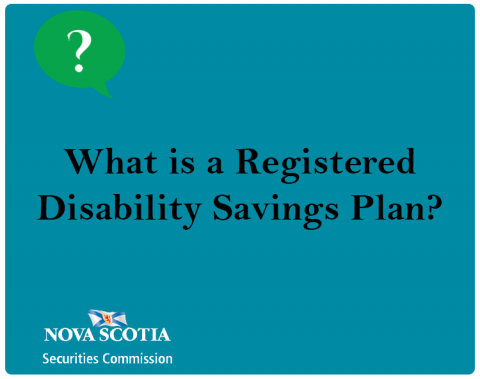Submitted by nsscadmin on

Throughout this month, which is Investor Education Month, we’ve been sharing basic information on investment accounts, specifically RRSPs, TFSAs and RESPs with a new infographic and video. One type of account we did not include in this new primer is registered disability savings plans, or RDSPs.
The purpose of an RDSP is to help a person with a disability save for retirement. As an incentive to open this type of account, the Canadian government provides assistance.
The RDSP was created by the federal government in 2008. The special registered account has five major differences when compared to regular investment accounts:
1) All investments in the account grow tax-free.
2) The federal government will deposit up to $20,000 for eligible recipients.
3) The federal government will match deposits into the account up to $70,000.
4) Federal benefits are not reduced by withdrawals from a RDSP.
5) All money deposited can be withdrawn tax-free. There may be tax on investment growth when withdrawn. You should contact the CRA for specifics on what is tax-free and what will be taxed.
For full information on eligibility requirements and rules around making deposits and withdrawals in an RDSP we recommend contacting the CRA, but here is some basic information to get you started.
To be eligible to become a beneficiary of an RDSP you must be under 60 years of age and a resident of Canada with a SIN card. A medical professional must certify that you have a disability that qualifies for the program. The CRA will assess your eligibility when they receive this certification.
An RDSP can be opened at most financial institutions in Canada. A plan holder can be a parent or legal guardian, or the beneficiary if they are over 18 years of age. Anyone can contribute to the plan if given permission by the beneficiary.
There are different rules and regulations around withdrawing from an RDSP depending on your age, specifically if you under or over 60 years old. Contact the CRA for full details on how a withdrawal can differ depending on your age.
